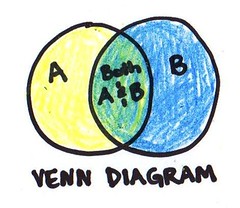The world and I wrote a paper Friday.
By midnight tonight, I’m to submit my Theory of Learning for A-341 Supporting Teachers for Instructional Improvement. I’d been resisting the writing of the paper. After railing against the silver-bullet approach to education, sitting down to distill my beliefs into a single theory lived in a hypocritical room of my brain.
The temptation was strong to submit a Word doc containing only a link to this space, but that steps outside the bounds of the assignment requirements.
Two weeks ago, I asked 5 people to take a look at the first few pages of a rough draft of the paper. I’d written it up in Google Docs and shared it out.
Friday, I needed to get down to business. I wasn’t going to face a long weekend with an assignment hanging over my head the entire time.
I sent out this tweet and started writing:

Before long, other folks from wherever had jumped into the doc and started lurking. A few left comments on my friends’ comments. My friends, either from the doc or via e-mail, responded to the comments.
I kept typing.
Dan Callahan, who’s about as fine a teacher and person as you’re likely to meet, retweeted:

Google Docs let me know as more people joined me in the doc.
I kept typing.
As I neared the end, this message popped up in the doc’s chat window:

On the other side of the world, a teacher I didn’t know was reading my thinking as I cobbled thoughts together. Even more, she was moved to interact. We talked about our experiences in modeling and eliciting passion from students and shared a bit about our backgrounds. I learned her name is Jo:
I told her the doc would remain live as long as Google let it be so and that the copy would be posted here. I offered to brainstorm with her and her teaching partner if they’d like – to continue connecting.
And then she left.
I kept typing.
The difference at that point was huge.
I’d been putting together a theory of learning based on the ideas that:
- Students learn best when they are in an ethic of care.
- Students learn best when they know something about what they are learning.
- Students learn best when the learning situation has real stakes and is challenging.
- Students learn best when the learning is playful.
I’d been professing all of this to complete an assignment that initially spoke only to the second tenet. I knew a little bit of where I spoke.
The rest, as a student, I created.
As soon as I invited my friends, those whose minds and passions inform my thinking, I chose to surround myself in an ethic of care. In the initial stages of the rough draft, my sister Rachel watched from Missouri as I typed in Somerville. She offered encouragement and asked prodding questions. What I was saying mattered to someone other than me.
Each time Bud or Ben or Debbie pushed back, my learning was more playful. Every comment in the spirit of “What about X?” was an intellectual chess move asking me to refine my process and play with my thinking more deeply.
As soon as Jo entered the chat and asked if she could use a piece of thinking that was being created as she typed, the stakes became real for me. What was otherwise to languish as another artifact of academia destined for the eyes of a professor and teaching assistant was transformed into a guide of practice that would, in some way, affect the learning of children half a world away.
Unless a teacher is completely out of touch with his students, an assignment is likely to connect to students’ previous learning and fulfill my second tenet.
The other three, though, they take work. I write this as a teacher and a student – that work makes all the difference.





 Results improved.
Results improved. Tuesday, we ended Day 2 with an
Tuesday, we ended Day 2 with an